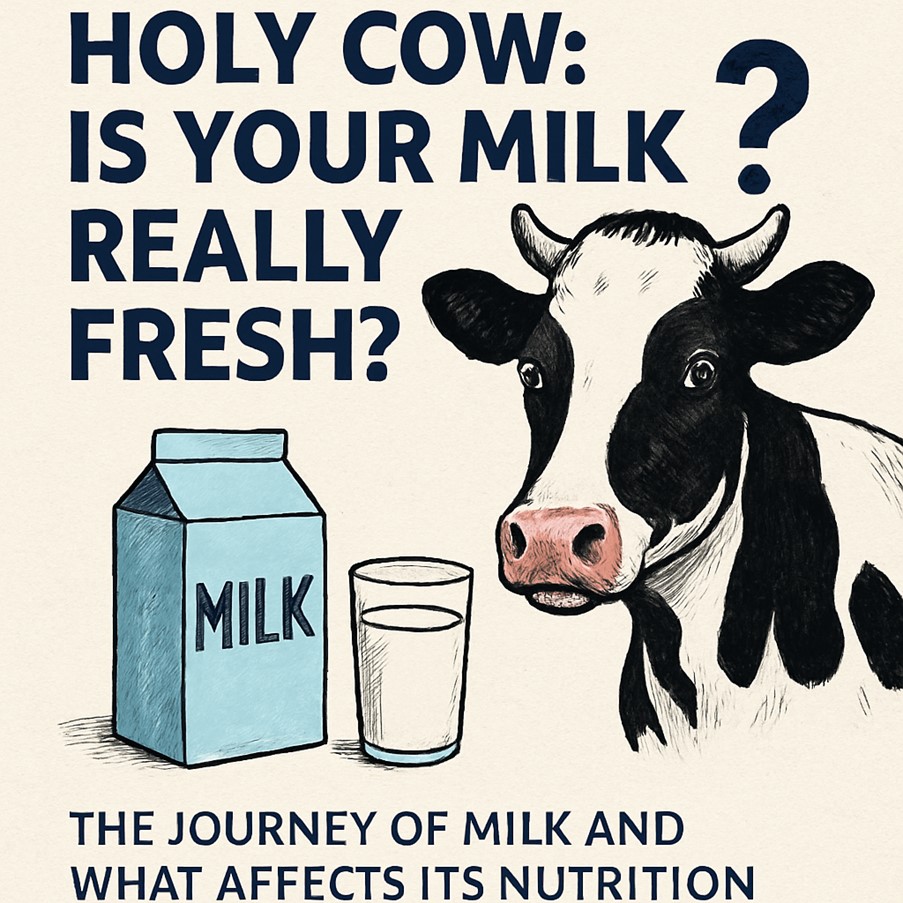Holy Cow: Is Your Milk Really Fresh?

India drinks over 500 million litres of milk every day – more than any country on Earth [1]. And yet, most Indian consumers don’t know where their milk comes from, how long it’s been travelling, or what happens to it between cow and cup.
The idea of “fresh milk” is comforting, but the truth is more complex.
Fresh Milk? Or Just Recently Chilled?
Many large milk brands in India collect milk from thousands of farmers, sometimes across dozens of districts. It can take:
- 4–6 hours from milking to chilling
- 12–24 hours before packaging
- Up to 48 hours to reach the retailer
By that time, fat may have separated, SNF degraded, and natural enzymes disrupted. Research by the Food Safety and Standards Authority of India (FSSAI) highlights the importance of milk chilling within 2 hours to maintain microbial safety [2].
The Risk of “Fresh” Labels
In some informal chains:
- Neutralizers and stabilizers may be added to extend shelf life
- Milk is mixed from multiple sources, losing traceability
- Milk may be heated and cooled repeatedly, affecting taste and nutrient retention
A study by the Consumer Voice organization found common adulterants like starch, detergent, and urea in milk sold as “fresh” in urban India [3].
What Truly Affects Milk Freshness?
- Time to Chill
Longer delay = microbial load ↑, protein stability ↓ - Animal Feed
Cows on poor-quality or fibrous feed produce thinner milk with faster spoilage - Water Content
Adulterated or diluted milk often spoils within hours, no matter how “fresh” it looks
4. Preservatives
While they extend shelf life, they alter natural taste and quality and may be illegal
How Shunya Improves Freshness at the Source
Shunya doesn’t sell milk directly. By facilitating Green Fodder delivery it helps farmers produce better, more stable, more traceable milk by:
- Delivering clean, green Nutri Ankurit Feed (NAF), affordable hydroponic fodder for small farmers every day
- Supporting rural farmers through a daily fodder-as-a-service subscription model
- Promoting animal health and digital veterinary services rural india to prevent contamination
- Encouraging participation in traceable, cooperative milk sales
In the Doodh Darpan study [4], milk from NAF-fed buffaloes had:
- More consistent fat and SNF
- Better storage stability
Higher farmer earnings, without added inputs.
What Can Consumers Do?
Start asking:
- Where is my milk from?
- What does the animal eat?
- Is the farmer being rewarded for quality?
- Is the system traceable or just fast?
As India moves toward traceable food systems (as promoted by NDDB, AMUL, and startups alike), consumers will play a key role by demanding not just white milk but right milk.
In conclusion
Milk freshness isn’t about how long it’s been chilled. It’s about:
- Animal health
- Clean feed
- Microbial safety
- Local systems
And the next time your milk sours too fast, remember:
It wasn’t the fridge. It was the farm-to-fridge journey.
Choose milk that’s traceable, transparent, and fair; for the cow, the farmer, and for yourself.

